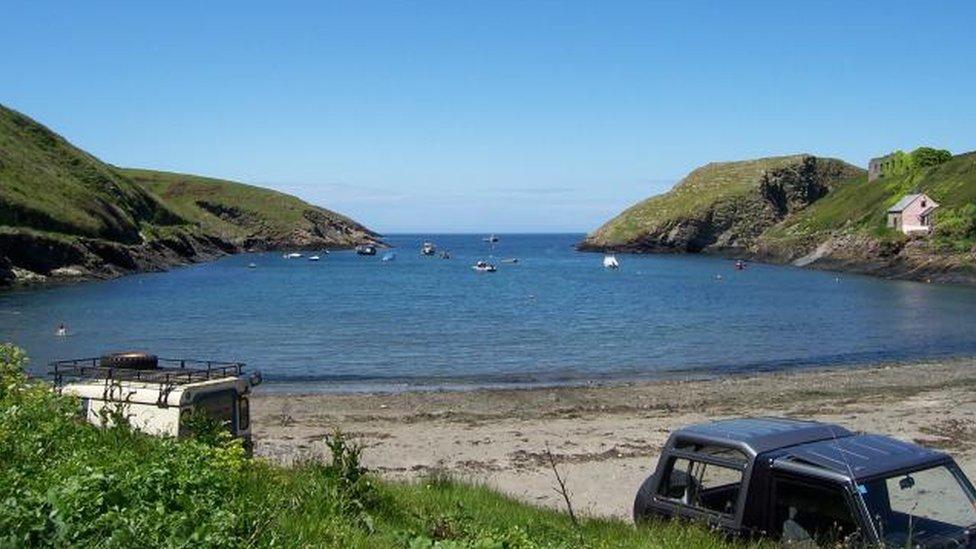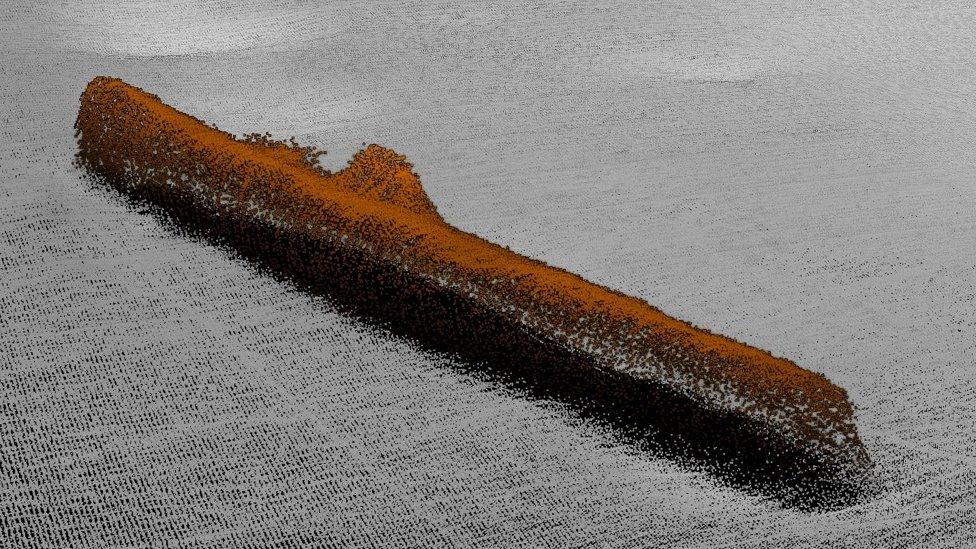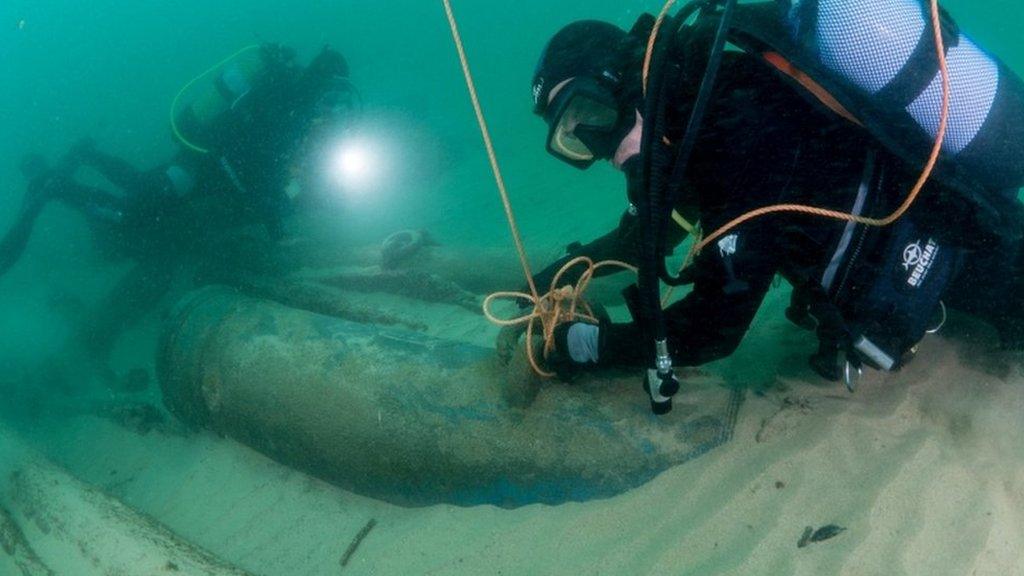Abercastle Bay shipwreck: divers begin SS Leysian study
- Published
See the shipwreck from the perspective of the divers
About 100 divers are taking part in a marine archaeological study of a World War One shipwreck off Pembrokeshire.
No lives were lost when the SS Leysian ran into cliffs in February 1917 in Abercastle Bay and sank months later.
A dozen dive clubs are involved in the study, external, part of The U-Boat Project, external, to mark the centenary of the end of WWI, and to learn more about the vessel.
The project has also looked at other wrecks around the Welsh coast, and identified German U-boats.
Ian Cundy from The Nautical Archaeology Society said the aim will be to record details of the SS Leysian wreck and provide an opportunity for divers and others to gain experience in a maritime archaeological study.
He said there have been mixed reports about how the ship came to strike the rocks, including being pursued by a German submarine, but another account blamed human error.


The SS Leysian had been transporting supplies overseas after being requisitioned for the war effort
SS Leysian facts
1906 - Built as the SS Serak in Newcastle-upon-Tyne for a German shipping line
1906/14 - Trading as a general cargo vessel between Europe and the west coast of America
1914 - Given to a British shipping line as a "prize of war" and re-named the SS Leysian
1915/17 - Used to transport pack animals from America to assist with the war effort in Europe and north Africa
20 February 1917 - Wrecked at Abercastle Bay while en route to the US from Belfast
Source: The Nautical Archaeology Society

Mr Cundy is hoping local people will come forward with old photographs of the vessel in the months before it sank because none have been found in public records.
Some salvage work was carried out before the 440ft (121m) vessel eventually sank so there was a lot of activity nearby.
"The wreck must have drawn people in to see the spectacle, and was probably the biggest event ever to have happened in Abercastle, so where are all the photographs?" he said.
Dive clubs from England and Wales are taking part in the project which runs until 17 June, including members of members of Pembrokeshire-based Red Dragon Divers.

The wreck lies about 300m (980ft) from the causeway
A field base will be set up at a nearby campsite to manage the day-to-day logistics due to the number of people involved.
Divers will be using underwater remotely operated vehicles (ROVs) to take pictures and video of the wreck which is about 300m (980ft).
Finance for the project has come from Heritage Lottery Fund (HLF) with support from Bangor University's Centre for Applied Marine Sciences and the Royal Commission on the Ancient and Historical Monuments of Wales (RCAHMW).
- Published3 April 2019

- Published7 October 2018

- Published25 September 2018
